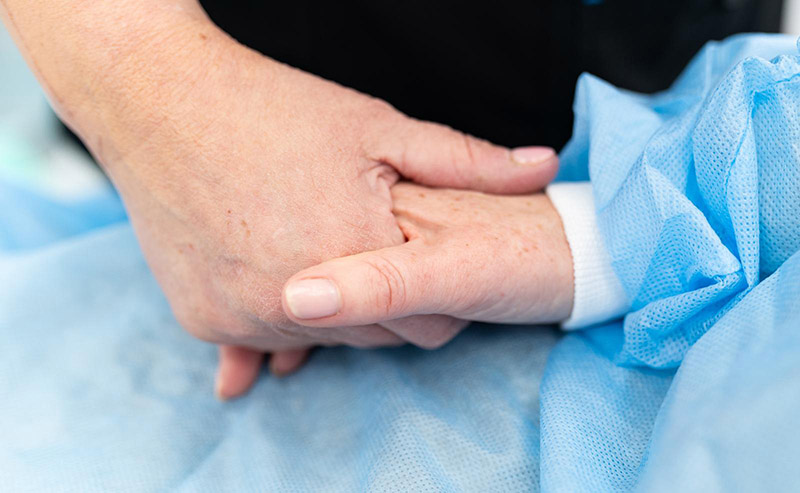
Tips and Resources to Stop Smoking before and after Plastic Surgery
If you’re considering plastic surgery with Consultant Plastic Surgeon Anca Breahna, quitting smoking and vaping is one of the most important steps you can take to ensure the best possible outcome. Smoking and vaping can have significant negative impacts on your surgical results and overall recovery process.
Why Quit Smoking and Vaping Before Surgery?
When you smoke or vape, you inhale a complex mixture of chemicals that can harm your body in many ways. Nicotine, in particular, is a potent vasoconstrictor that narrows your blood vessels, reducing blood flow and oxygen delivery to your tissues. This can impact your body’s ability to heal after surgery.

Risks and complications associated with smoking and vaping before and after surgery include:
- Impaired wound healing: Reduced blood flow and oxygen delivery can slow down the healing process, increasing the risk of wound dehiscence (wound opening) and infection.
- Increased risk of infection: Smoking and vaping weaken your immune system, making it harder for your body to fight off infections after surgery.
- Delayed recovery: Smokers and vapers typically experience longer hospital stays and slower overall recovery times compared to non-smokers.
- Increased risk of complications: Smoking and vaping can increase the risk of complications such as blood clots, pneumonia, and heart problems during and after surgery.
- Anaesthesia-related risks: Smokers and vapers may have a higher risk of complications related to anaesthesia, such as breathing problems and post-operative nausea and vomiting.
Anca strongly recommends that you quit smoking and vaping at least 4-6 weeks before your scheduled surgery date. This will give your body time to recover from the harmful effects of smoking and vaping, improving your chances of a successful surgery and a smooth recovery.
More about Nicotine Addiction
Nicotine addiction is a complex issue that involves both physical and psychological dependence. When you smoke or vape, nicotine is rapidly absorbed into your bloodstream and travels to your brain within seconds. In the brain, nicotine binds to specific receptors, triggering the release of neurotransmitters such as dopamine, which creates feelings of pleasure and reward.
Over time, your brain becomes accustomed to the presence of nicotine and adjusts its chemistry accordingly. As a result, you may experience withdrawal symptoms when you try to quit, such as irritability, anxiety, and cravings for nicotine. These withdrawal symptoms can make quitting challenging, but you develop effective strategies for overcoming it.
Common triggers for smoking and vaping include:
- Stress and anxiety: Many people use smoking or vaping as a way to cope with stress and anxiety, as nicotine can temporarily alleviate these feelings.
- Social situations: Smoking and vaping can be social activities, and you may feel tempted to smoke or vape when you’re around others who are doing so.
- Alcohol consumption: Drinking alcohol can lower your inhibitions and increase your desire to smoke or vape.
- Boredom or idle time: Smoking or vaping can become a habit that you turn to when you’re bored or have nothing else to do.
- After meals: Many people associate smoking or vaping with finishing a meal, and may feel the urge to smoke or vape after eating.
Preparing to Quit
Once you’ve decided to quit smoking and vaping before your surgery, it’s essential to create a plan and prepare for the challenges ahead. By setting a quit date, informing your support network, identifying your triggers and coping strategies, and creating a smoke-free environment, you can increase your chances of success and make the quitting process more manageable.
Setting a quit date
Choose a date to quit smoking and vaping that is at least 4-6 weeks before your scheduled surgery. This will give you time to adjust to life without nicotine and allow your body to begin healing from the effects of smoking and vaping. Make sure to choose a date that is realistic and achievable for you, and consider factors such as stress levels and social obligations when making your decision.
Informing family and friends for support
Letting your loved ones know about your decision to quit smoking and vaping can provide you with a valuable support system throughout the quitting process. Share your reasons for quitting, your quit date, and how they can help you stay on track. You may also want to consider joining a support group or working with a counsellor who specialises in helping people quit smoking and vaping.
Identifying personal triggers and coping strategies
Take some time to reflect on the situations, emotions, and activities that trigger your desire to smoke or vape. Once you’ve identified your triggers, brainstorm healthy coping strategies that you can use instead of turning to nicotine. For example, if stress is a trigger for you, you might try deep breathing exercises, meditation, or going for a walk when you feel the urge to smoke or vape.
Cleaning living spaces and removing smoking/vaping paraphernalia
Creating a smoke-free and vape-free environment can help reduce your exposure to triggers and make it easier to stick to your quit plan. Before your quit date, thoroughly clean your living spaces, including your car, to remove any lingering smells of smoke or e-cigarette vapour. Dispose of all cigarettes, e-cigarettes, lighters, ashtrays, and any other smoking or vaping paraphernalia to reduce the temptation to use them.
Methods to Quit Smoking and Vaping
There are several methods and aids available to help you quit smoking and vaping, each with its own benefits and drawbacks. The most common approaches include going cold turkey, gradually reducing nicotine intake, using nicotine replacement therapy (NRT), prescription medications, and alternative therapies. The best method for you will depend on your individual needs, preferences, and medical history.
Cold turkey vs. gradual reduction
Going “cold turkey” means quitting smoking and vaping abruptly, without any gradual reduction in nicotine intake. This method can be challenging, as it can lead to intense cravings and withdrawal symptoms. However, some people find that a clean break is the most effective way to quit. Gradually reducing your nicotine intake, on the other hand, involves slowly cutting back on the number of cigarettes you smoke or the amount of nicotine in your e-cigarette over time. This method can help you adjust to life without nicotine more gradually, but it may also prolong the quitting process.
Nicotine replacement therapy (NRT) options
NRT is a popular choice for people who want to quit smoking and vaping, as it can help manage cravings and withdrawal symptoms. NRT products, such as patches, gum, lozenges, and inhalers, provide a controlled dose of nicotine without the harmful chemicals found in cigarette smoke and e-cigarette vapour. These products can be used alone or in combination, and are available over-the-counter or by prescription. Your doctor or a smoking cessation specialist can help you determine which NRT products are right for you.
Prescription medications
In addition to NRT, there are several prescription medications that can help you quit smoking and vaping. These include bupropion (Zyban) and varenicline, which work by reducing cravings and withdrawal symptoms. These medications are not suitable for everyone, and they can have side effects, so it’s essential to discuss the risks and benefits with your doctor before starting treatment.
Alternative therapies
Some people find that alternative therapies, such as acupuncture, hypnosis, or mindfulness meditation, can help them quit smoking and vaping. While the evidence for these therapies is mixed, they may be helpful for some people when used in combination with other quitting methods.
Resources and Support to Help You Quit Smoking
Quitting smoking and vaping can be challenging, but you don’t have to go through it alone. There are many resources and support services available in the UK and online to help you on your journey to a smoke-free life.
The NHS Smokefree website is a comprehensive resource for people who want to quit smoking and vaping. It offers a range of tools and support, including:
- A free online Personal Quit Plan that helps you create a tailored plan for quitting
- A Smokefree app that provides daily support and motivation
- Information on nicotine replacement therapy (NRT) and prescription medications
- Tips and advice for managing cravings and withdrawal symptoms
National Smokefree Helpline (0300 123 1044)
The National Smokefree Helpline is a free, confidential service that provides advice and support for people who want to quit smoking and vaping. The helpline is staffed by trained advisors who can offer guidance on quitting methods, NRT, and coping strategies, as well as provide information on local support services.
Local stop smoking services
Many areas in the UK have local stop smoking services that offer free, face-to-face support for people who want to quit. These services are staffed by trained advisors who can provide personalised support, advice on NRT and medications, and help with managing cravings and withdrawal symptoms. You can find your local stop smoking service by visiting https://www.nhs.uk/smokefree/help-and-advice/local-support-services-helplines.
The NHS Smokefree app is a free, easy-to-use tool that provides daily support and motivation for people who want to quit smoking and vaping. The app includes features such as:
- A daily message and quitting tips
- A savings calculator that shows you how much money you’ve saved by quitting
- A progress tracker that helps you monitor your quitting journey
- A craving timer that helps you manage cravings when they strike
FAQs about How to Stop Smoking and Vaping before and after Plastic Surgery
How long before surgery should I quit smoking and vaping?
It is recommended that you quit smoking and vaping at least 4-6 weeks before your scheduled surgery date. This allows your body time to recover from the harmful effects of nicotine and improves your chances of a successful surgery and smooth recovery.
Can I use e-cigarettes or vape pens as a way to quit smoking before surgery?
While e-cigarettes and vape pens may be perceived as a safer alternative to traditional cigarettes, they still contain nicotine and can have negative effects on your surgical outcomes and recovery. It is best to quit all forms of nicotine, including vaping, before your surgery.
What if I have trouble quitting smoking and vaping on my own?
If you find it challenging to quit on your own, there are several options available to help you. These include nicotine replacement therapy (NRT), prescription medications, counselling, and support groups.
Will quitting smoking and vaping affect my eligibility for surgery?
In some cases, surgeons may require patients to quit smoking and vaping before proceeding with surgery. This is because the risks and complications associated with smoking and vaping can compromise the safety and effectiveness of the procedure. If you are unable to quit, it is important to discuss this with Anca, as it may impact your eligibility for surgery.
What if I relapse and start smoking or vaping again after surgery?
If you do relapse after surgery, it is important to be honest with Anca and her team. They can help you get back on track and provide additional support and resources to help you maintain a smoke-free lifestyle. Remember, quitting is a journey, and setbacks are a normal part of the process. The key is to learn from them and keep working towards your goal of a smoke-free life.
Further Reading about Surgery with Consultant Plastic Surgeon Anca Breahna
- Read more about Losing Weight before Plastic Surgery
- Read more about Recovery Tips and Instructions
- Read more about Risks and Complications
- Read more about How to Avoid Bloating after Plastic Surgery
- Read more about How Alcohol Affects Plastic Surgery Results

 Ms Anca Breahna, PhD, MSc, FEBOPRAS, FRCS (Plast) is a highly regarded Consultant Plastic Surgeon specialising in the field of Aesthetic and Reconstructive Plastic Surgery. Anca performs a range of
Ms Anca Breahna, PhD, MSc, FEBOPRAS, FRCS (Plast) is a highly regarded Consultant Plastic Surgeon specialising in the field of Aesthetic and Reconstructive Plastic Surgery. Anca performs a range of 